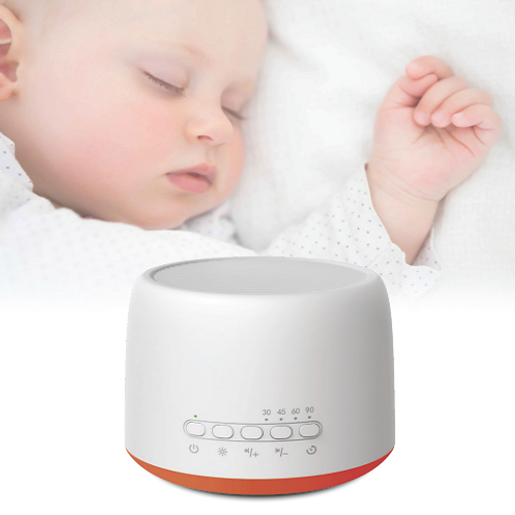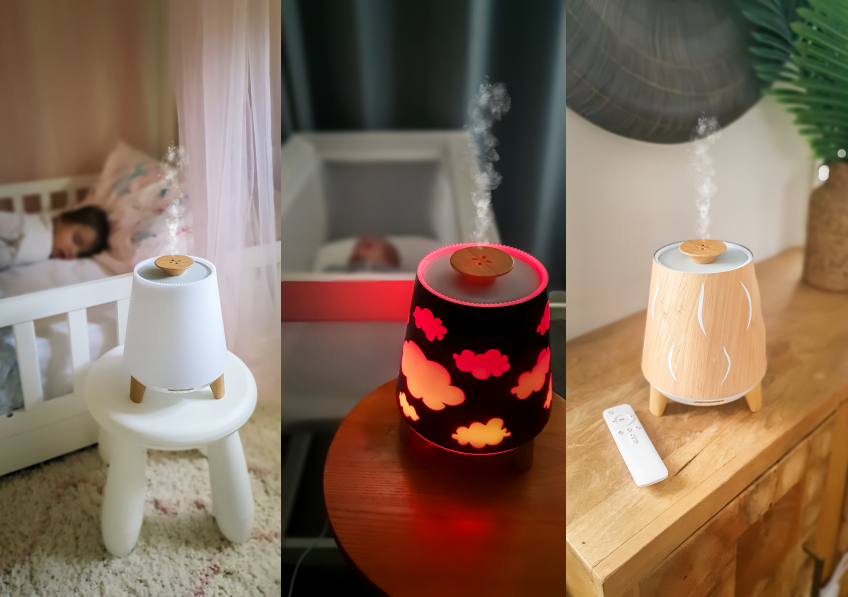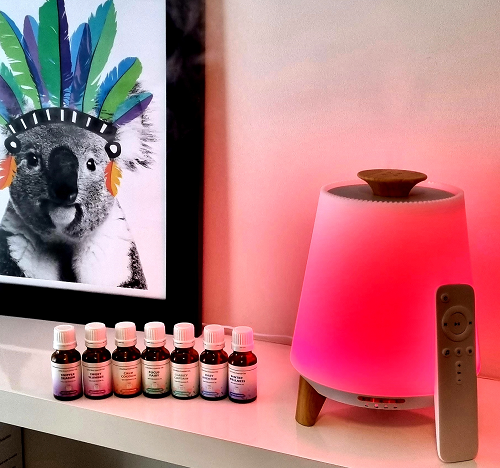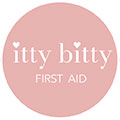18 Tips To Get Nap Time Sorted
Posted by Laura Klein on 23rd Sep 2020
Parents, we get it. From feedback on our website and social media, consistent day naps are high on your radar!
You want to know how to get you baby or toddler to nap longer, and make naps more consistent so your little one wakes rested, content and ready to learn and play.

Nap times don't look the same for every baby or child. Age appropriate naps can be made more flexible or rigid, depending on your child's age, temperament and needs.
And what was working a month ago, may not be working now. Children grow and change so much in the first 2 years.
If you're struggling with short or inconsistent naps, these 18 tips for daytime naps can help.....
1. Age Appropriate "Wake Windows"
"Routine" is probably not the right word for newborns, but a sleep pattern should consider "wake windows" during the day.
Newborns should have a wake window of 45-75 minutes (which includes feed and play). It can help make the day predictable for parents too.
By 3-6 months, routines are easier to establish and wake windows during the day have stretched to 75 - 90 minutes.
By 12 months, wake windows have stretched to 90-120 minutes.
During toddlerhood, wake windows may be a few hours.
Find the right fit for you, your child and your family situation.
2. Watch Sleep Cues
Don't always watch the clock to determine the next daytime sleep. Instead, watch for yawning, gazing/glassy eyes, disengaged eye contact with parent or eye rubbing.
Particularly for newborns and babies under 6 months.
If you wait until bub is fussy, you've waited too long - crying is usually a sign of over-stimulation and over tiredness.
However, not giving your child enough wake time, means they will be "undertired" and not nap well either.
It's a delicate balance that changes a lot in the first 12 months of life.

3. Daytime Sleep and Night Sleep Are Different
Your child may sleep well at night, but that doesn't always transfer to a day nap schedule. There are scientific reasons behind this, as they are very different and are handled by different parts of your child's brain.
Ideal lengths for day naps change with age, but should be between 60-150 minutes.
Night sleep is long, uninterrupted, restorative sleep (whilst understanding newborns and babies have the need to feed overnight, and then be put straight back to bed).
Even though day and night sleep is different, they are linked. A great plan for day naps leads to healthy, restorative and uninterrupted night sleep. Sleep breeds sleep.
4. Offer a Small Snack for Toddlers
Especially for toddlers, their rapid growth and development and boundless energy means they are burning lots of calories. A small fruit snack or milk drink can help them nap longer and prevent early waking from hunger.
Why not read them a story while they snack, as a calm and loving way to prepare for their daytime nap. But remember, just 1 story, otherwise you will be reading forever!! If you finish the book before they finish the food, go back and talk about the pictures or their favourite page.
5. Offer a Small Feed for Babies
Like the idea above, a slightly full tummy can help baby settle into a full 40 min -1.5 hour long nap. But be careful not to do it right before nap time. Feed and burp thoroughly, then make sure your baby is upright for at least 5 - 10 minutes, to avoid a mid-nap spit up or air bubble in the tummy.
Sit bub on your lap facing out, and enjoy a simple picture book for a few minutes. It may be the same book each nap time - babies love familiar pictures and will feel so relaxed from listening to your soothing voice and feeling your cuddle.
6. Avoid too many On-The-Go Naps
Life is busy but baby naps that happen in the car or pram or child carrier are less restorative than sleep that happens in the cot. Sometimes it's unavoidable, but try to have the majority of nap times each week in a consistent place in the home environment.

7. The Swing or Baby Swaddle Nap
A daytime nap in an infant swing or baby swaddle can be a bit of heaven for an exhausted parent who will do anything to get their baby to sleep. We understand, as we have all had those days (or weeks, or months!!) when we would pay a million dollars just for a short window of downtime from a demanding baby.
But using an infant swing or swaddle/baby carrier can quickly become a habit that is impossible to break, and baby simply won't learn to sleep lying down. The occasional daytime nap in a swing or swaddle is okay, but keep focused on the future, and aim for the majority of day sleep lying down in a cot or bassinet.
8. Create a Nap Routine
The word "routine" is a very loaded word. There are a lot of negative and archaic images that come to mind when we say routine. It has a very regimented connotation. So we prefer to talk about sleep patterns or age-appropriate sleep guide.
A simple, predictable set of steps helps your baby or young child predict what's coming next. A nap routine is simply a shorter version of a bedtime routine and should take no more than 5 or 10 minutes. Perhaps looking at family photos on the fridge, looking at an ABC poster on the door, reading a favourite picture book, a simple song or rhyme can help them settle in to nap time more easily.
9. Avoid Screens
In 2020, TVs, tablets and phone screens seem to be encroaching on childhood far more than previous generations. Screen rules and limits should be consistent and age-appropriate, however avoid having your toddler watch TV or play on a tablet right before nap time, as it wires brain neurons and may lead to a too-short nap. End all screen time at least 30 minutes before your toddler's nap time.
10. Nap Free Before 8am and After 3pm
For babies older than 6 months and toddlers, it's best to avoid these very early or late naps. Early morning naps tend to reinforce early waking. Similarly, late afternoon naps can completely derail a normal evening bedtime.

11. Yes, You Can Wake A Sleeping Child
I know the old wives' tale was to never, ever wake a sleeping child (especially newborns!), but there are times when an extra, extra long nap for an older baby or toddler needs to end.
If your child sleeps too much in the day, it will likely affect night sleep in a negative way.Ideal nap lengths change with age, but should be between 60-150 minutes.
An exception to this rule would be in times of sickness, when extra rest may be needed.
12. A Special Nap Time Friend
Babies and children often have a special blankie, soft toy or comforter which calms them by the smell and touch. But it's a good idea to reserve that special item just for nap and sleep time (stay strong - kids can be very persistent at other times of the day to have their blankie.
I had to hide them in the cupboard during wake time for my kids!! My boys loved their blankie so much they would sprint to their cot or bed for nap time, just so they could get their hands on their 'blankie'. It was an easy and comforting incentive to have a nap.
The Organic Farm Buddies (below) are absolutely gorgeous and available on our website.
13. The Right Mix of Light and Dark
Keeping your child's room dim can help produce really great naps. A dim room is very different to other brighter play areas during the day, so as they enter their darkened bedroom, it signals that it's time settle down and sleep.
But don't go crazy! There is no need to cover the entire window with black cardboard (although I know many parents who do, and find it works a treat!) Perhaps just close the blinds and pull the curtains!
14. The Magic Ingredient: White Noise
All those day time noises - traffic, ambulance sirens, dogs barking, front door bells, phones ringing - can make it hard for your child to sleep well. White noise is a low frequency, consistent noise (think vacuum cleaner!!) that easily blocks out these sounds and helps your child sleep deeply. It's the number one sleep tip in Bec Judd's new book The Baby Bible.
It also becomes a familiar, audio clue that sleep time has arrived. White Noise, like the compact Three Sheep White Noise(below) can be a blessing for babies, toddlers and older children, and should also be used at night time too.

15. Create an Ambient Sleep Environment can affect sleep. A soothing, natural approach to calm sleep can be achieved by using a Cool Mist Vaporiser with a pure essential oil think organic orange, lavender, mandarin, Roman chamomile).
HUSH is a sleep vaporiser that humidifies and purifies the air and allows the calming, organic oils to be absorbed into the skin, respiratory and limbic systems. It also has built in white noise and red light therapy. Zzzzzzz....
16. "Rest Time" VS Nap Time for Toddler
There comes a time when your toddler is no longer needing a day time sleep - and many parents are devastated when that day comes. It's good for everyone to have an "after lunch" break! But you don't have to give up a small window of afternoon peace and quiet. Instead, establish a "Rest, Lie, Book" time where your little one goes to their room for 20-60 mins to lie down and read books quietly.
Remember, no screens or toys, just glorious, engaging picture books and parents decide when the rest time is over. Establish the pattern, and "rest time" can become a favourite time for your little one (and you!)
17. Fix Nights or Days First?
If you're sleep training a toddler or older child, you may want to work on night routines before naps. This rule is not set in stone, but some families find it's easier to work on night time sleep first.

18. Accept "Nap Busters" Are a Part of Life
Nap busters like teething, growth spurts, sickness, sleep regressions, holidays, visitors, or a new baby can destroy your child's napping habits temporarily. It's fine to take a break to comfort your child, but be sure that you avoid creating any new, negative napping habits that you'll have to undo later.
Good naps can transform the temperament and capacity of a little one to play and discover the world around them.
We are ready to help your family sleep well and smile....



















